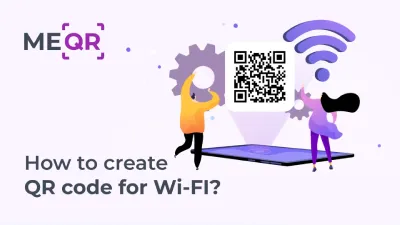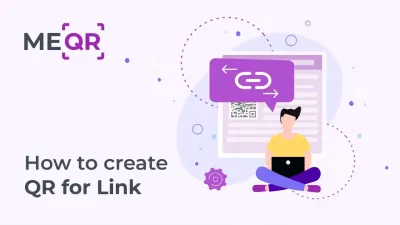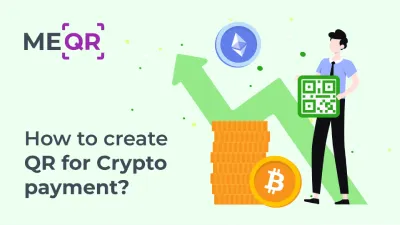QR Code on Grave Markers: Preserving Memories Digitally
To create a QR code for a link, video or picture - click on the button below.

How we remember and honor our deceased loved ones has evolved significantly over the centuries. From simple stone markers to intricate monuments, the methods we use to memorialize have continually adapted to cultural and technological changes.
In recent years, a growing trend has emerged that merges traditional grave markers with digital technology: the use of QR codes. This article explores the concept of the QR code for a headstone, providing an in-depth look at its history, benefits, implementation, and future implications.
The Evolution of Grave Markers
Grave markers have a long and varied history, reflecting the cultural and technological contexts of their times.

Ancient Markers
The earliest grave markers were simple stones or wooden crosses, serving primarily to mark the burial site. These markers often lacked detailed inscriptions or artistic designs and were used to signify the location of the grave rather than provide information about the deceased.

Medieval and Renaissance Eras
During the medieval and Renaissance periods, grave markers became more elaborate. Headstones and tombs featured intricate carvings, religious symbols, and detailed epitaphs. The materials used also evolved, with marble and granite becoming popular choices for their durability and aesthetic appeal. These markers often included religious imagery, reflecting the dominant cultural and spiritual beliefs of the time.

Modern Developments
The 19th and 20th centuries introduced mass-produced headstones and the use of durable materials like granite and marble. Personalization became more common, with engraved images and detailed inscriptions. The Industrial Revolution and advances in technology allowed for more intricate designs and the widespread availability of grave markers.
Today, the integration of digital technology represents the latest evolution in memorialization practices. This shift reflects broader trends in society towards digitalization and the increasing importance of the internet in daily life.
The Rise of Digital Tombstone
Digital memorials have become increasingly popular, offering new ways to remember and celebrate the lives of loved ones. These digital tributes complement traditional practices by providing new features and accessibility options.
Features of Digital Tombstones
Digital memorials offer several key features that enhance the traditional ways of honoring loved ones:
-
Online Memorial Pages: Websites and social media pages dedicated to sharing memories, images, and stories. These pages can be personalized and updated over time, allowing for a dynamic and evolving tribute.
-
Virtual Cemeteries: Digital spaces where people can visit and pay respects to the deceased from anywhere in the world. Virtual cemeteries often include interactive features, such as the ability to leave virtual flowers or messages.
-
Interactive Features: The ability to leave virtual flowers, candles, or messages. These features enhance the traditional memorial experience by allowing for continuous engagement and interaction.
These features of digital memorials offer a way to keep memories alive interactively and engagingly, making the experience of remembering loved ones more accessible and personal.

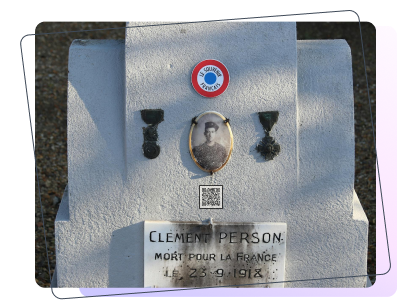
Accessibility of QR Code Tombstone
The integration of QR codes for tombstones is a natural extension of this trend, bridging the physical and digital realms. By providing a direct link to digital content, QR codes enhance the traditional memorial experience and allow for a more comprehensive and interactive tribute.
What are QR Codes?
To understand the role of QR codes in digital memorials, it's essential to grasp their basic functionality and relevance.
Comprehending QR Codes
QR (Quick Response) codes are a type of matrix barcode, or two-dimensional barcode, developed by the Japanese company Denso Wave in 1994. Unlike traditional barcodes that store data linearly, QR codes can contain much more information and can be scanned from any direction, which makes them extremely versatile.


How Do QR Codes Work?
QR codes are composed of black squares arranged on a white background. They can be scanned using smartphones or QR code readers, which interpret the encoded data and direct the user to digital content like URLs, videos, or text. This simplicity and ease of use make QR codes an ideal tool for various applications, including digital memorials.
When a QR code is scanned, the device's camera captures the image and processes it with specialized software. The software decodes the pattern of squares and translates it into a readable format, such as a PNG or Google Doc. This process is quick and efficient, allowing users to access digital content almost instantly.
Qr Codes on Headstones
The concept of integrating the QR code on a gravestone has gained traction as a way to enhance traditional memorials with digital content.
The Concept of QR Headstones
Digital grave markers incorporate QR codes engraved or affixed onto traditional headstones. When scanned, these QR codes can direct visitors to a personalized online memorial page, offering a richer and more interactive experience than a conventional inscription alone.
Digital grave markers blend the physical and digital worlds, providing a comprehensive and dynamic way to remember and honor the deceased. By linking to digital content, QR codes allow for continuous updates and engagement, ensuring that the memorial remains relevant and meaningful over time.

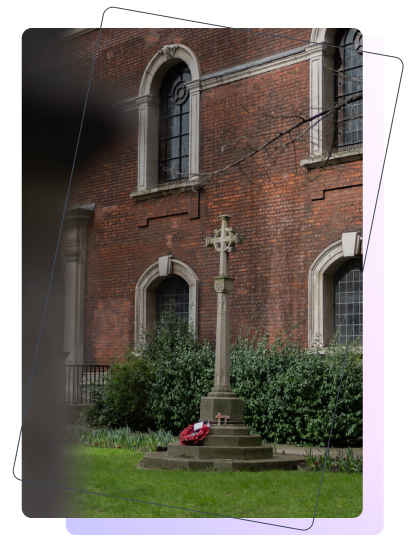
Benefits of Gravestone QR Code
The advantages of using QR code gravestone are numerous:
-
Extended Information: QR codes can link to detailed biographies, photo galleries, and files, providing a more comprehensive view of the deceased’s life. This information can be continuously updated, ensuring that the memorial remains current and relevant.
-
Interactive Engagement: Visitors can leave messages, share memories, and interact with digital content, creating a dynamic memorial. This interactivity enhances the traditional memorial experience and allows for continuous engagement and connection.
-
Preservation of Memories: Digital content linked to QR codes can be updated and maintained over time, ensuring memories are preserved for future generations. This longevity ensures that the deceased's legacy remains accessible and meaningful.
These benefits illustrate how the QR code grave marker can transform the way we memorialize and remember our loved ones, making the experience more engaging and lasting.
How to Implement a QR code on Tombstone?
Creating and embedding a QR code for gravestones involves several practical steps.
Step One: Choosing the Right QR Code Generator
Selecting a reliable QR code generator is crucial. One such generator is ME-QR, which offers various features tailored to meet the needs of users looking to create digital memorials. When choosing a QR code generator, consider the following factors:
-
Data Capacity: Ensure the generator can handle the amount of information you want to encode. The QR code should be able to store all necessary data without compromising readability or functionality.
-
Customizability: Look for options to customize the design and color of the QR code to match the grave marker. Customization can enhance the aesthetic appeal and ensure the QR code blends seamlessly with the marker.
-
Reliability: Choose a generator with a good reputation and positive reviews to ensure the QR code will remain functional over time. Reliability is essential to ensure the QR code remains scannable and the linked content accessible.
Choosing the right QR code generator is the first step in ensuring that the digital memorial is effective and lasting.


Step Two: Creating and Embedding QR Codes
Follow these steps to create and embed a QR code plaque:
-
Generate the QR Code: Use a QR code generator like ME-QR to create the code, linking it to the desired digital content. Ensure the QR code is high-resolution and easily scannable.
-
Select the Placement: Decide where on the grave marker the QR code will be placed. Consider visibility and accessibility for visitors. The QR code should be easily reachable and visible, ensuring visitors can scan it without difficulty.
-
Engrave or Affix the QR Code: Work with a professional to engrave the QR code directly onto the marker or use a durable, weather-resistant plaque. The QR code should be durable and resistant to environmental factors to ensure its longevity.
By following these steps, you can effectively implement the QR plaque on grave markers, creating a digital link that enhances traditional memorials.
Step Three: Maintaining and Updating QR Codes
It’s essential to ensure the longevity and relevance of QR codes on grave markers:
-
Regular Checks: Periodically scan the QR code to ensure it is still functional and the linked content is accessible. Regular maintenance ensures the QR code remains scannable and the content relevant.
-
Content Updates: Keep the digital content up to date, adding new memories, photos, or messages as needed. Continuous updates ensure the memorial remains relevant and meaningful.
Maintaining and updating QR codes ensures that the digital memorial continues to serve its purpose effectively over time.

Examples and Case Studies of Gravestone QR Codes
Examples and case studies illustrate the impact and effectiveness of QR memorials.

Notable Examples of a Headstone QR Code
Several notable examples demonstrate the potential of QR codes in a cemetery to enhance traditional memorials:
-
Jim Morrison’s Grave: A QR code on the famous musician’s grave in Paris links to a virtual memorial with his audio, biography, and fan messages. This digital tribute provides a comprehensive and interactive way for fans to remember and honor Morrison.
-
Innovative Memorials in Japan: Several cemeteries in Japan have adopted QR codes to provide visitors with detailed histories of notable individuals. These digital memorials enhance the traditional cemetery experience by providing rich and interactive content.
These examples show how QR codes can transform grave markers into dynamic, interactive memorials that provide a deeper connection to the deceased.
Success Stories from Families about QR Gravestone
Families who have used a digital gravestone share positive experiences:
-
The Thompson Family: After losing their beloved grandmother, the Thompson family added a QR code to her grave marker, linking to a digital scrapbook filled with logos, recipes, and stories. This digital tribute has become a cherished resource for family members.
-
The Lee Family: The Lee family used a QR code on their father’s grave marker to link to a website where friends and family could share SMS with memories and upload photos. The interactive nature of the memorial has brought the family closer together.
These success stories highlight the personal impact that QR codes can have on memorialization, making the experience more meaningful for families and friends.

Grave QR Code: Ethical and Privacy Considerations
While the integration of digital technology into memorials offers many benefits, it also raises important ethical and privacy issues.

Respecting Privacy in QR Code Headstone
Privacy is paramount when creating digital memorials. Consider these guidelines:
-
Consent: Ensure that all content linked to the QR code is shared with the consent of the deceased’s family and respects their wishes. Obtaining consent is essential to ensure the digital memorial respects the deceased’s and their family's privacy.
-
Privacy Settings: Use privacy settings to control who can access and interact with the digital content. Privacy settings ensure that only authorized individuals can view and interact with the digital memorial.
Respecting privacy in digital memorials ensures that the digital content remains respectful and secure.
Managing Digital Content
Proper management of digital content is essential to maintain the integrity and security of the QR headstone:
-
Secure Hosting: Choose a secure hosting platform for digital content to prevent unauthorized access. Secure hosting ensures that digital content remains protected from unauthorized access and tampering.
-
Regular Updates: Keep the content current and monitor for any inappropriate or harmful interactions. Regular updates and monitoring ensure the digital memorial remains relevant and respectful.
Managing digital content effectively helps maintain the security and relevance of the digital memorial over time.

Future of Virtual Headstones
The future of digital memorials looks promising, with potential for further technological advancements and cultural shifts.

Innovations in Virtual Headstone Technology
Emerging technologies are likely to enhance digital memorials further:
-
Augmented Reality (AR): AR could enable visitors to view digital tributes superimposed on physical grave markers. This technology could provide a more immersive and interactive memorial experience.
-
Artificial Intelligence (AI): AI could assist in creating personalized and interactive digital memorials, responding to visitor queries, or generating content based on data from the deceased’s life. AI technology could enhance the personalization and interactivity of digital memorials.
These innovations have the potential to significantly change the way we interact with and remember our loved ones through digital memorials.
Long-term Implications
The long-term impact of digital memorials on cultural and social practices includes:
-
Changing Memorial Practices: Digital memorials may become a standard complement to traditional practices, offering more personalized and dynamic ways to honor the deceased. This shift could lead to more meaningful and interactive memorial experiences.
-
Cultural Adaptation: Different cultures will integrate digital memorials in unique ways, reflecting their traditions and technological adoption rates. The adoption of digital memorials will vary based on cultural norms and technological advancements.
The future of digital memorials promises a more personalized, interactive, and culturally adaptive approach to remembering and honoring loved ones.


Conclusion











